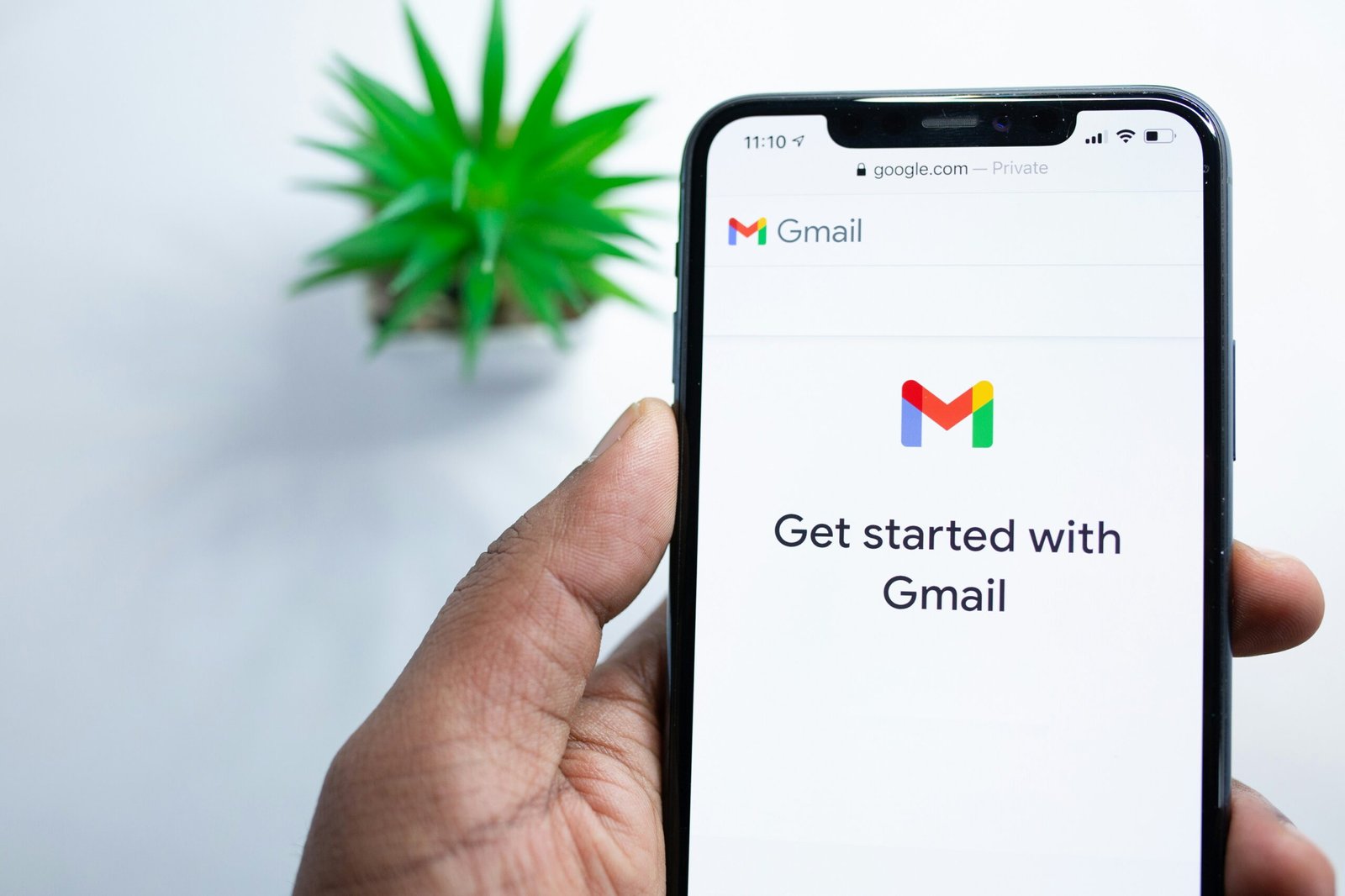Introduction to Email Marketing for Consultants
Email marketing has emerged as a pivotal strategy for consultants, particularly in niche fields such as the payments industry. The significance of building and managing an email list cannot be overstated. It serves as a direct line of communication with potential clients, allowing for enhanced engagement and relationship-building. For consultants operating in competitive landscapes, like payments, cultivating a solid email list can prove instrumental in establishing trust and credibility within the market.
First and foremost, an email list facilitates targeted communication. Unlike social media platforms or ads, where messages may be lost in the noise, emails land directly in the inbox of interested recipients. This targeted approach ensures that content reaches those who are most likely to value it, ultimately leading to higher conversion rates. Furthermore, by regularly sending informative content, consultants can position themselves as thought leaders in their fields, thereby increasing their attractiveness to prospective clients.
Common strategies for effective email marketing include segmentation, personalization, and automation. Segmentation allows consultants to categorize their audience based on specific criteria, enabling tailored messaging that resonates more deeply with various groups. Personalization, on the other hand, involves addressing recipients by name and customizing content according to individual preferences and behaviors, fostering a more intimate connection. Automation tools can help schedule and send emails at optimal times, enhancing the efficiency of campaigns.
As we delve into the success story of a payments consultant who effectively utilized these strategies to garner 600 email subscribers in just 30 days through a free eBook, it becomes evident that the integration of email marketing can yield substantial results. This case study will illustrate the powerful impact of a well-executed email marketing strategy in driving client engagement and business growth.
Understanding the Target Audience
In the realm of payment consulting, understanding the target audience is a pivotal factor for success. A detailed analysis of potential clients allows professionals to create tailored strategies that effectively address specific needs and preferences. Identifying demographic factors such as age, location, industry, and company size provides a foundational understanding of who the ideal clients are. For a payments consultant, focusing on business owners and financial decision-makers within small to medium-sized enterprises often yields the best results.
Equally important is the recognition of key pain points faced by these potential clients. Many businesses struggle with issues such as inefficient payment processing, high transaction fees, and lack of security in their financial transactions. By identifying these challenges, a payments consultant can position their expertise as the solution to these ongoing problems. Furthermore, understanding the interests of the target audience offers insights into the types of content that will resonate with them. This might include topics surrounding financial technology advancements, compliance updates, or strategies for improving cash flow.
Alongside demographics and pain points, building a customer persona enables a more nuanced understanding of the audience. This persona encompasses their goals, motivations, and the platforms they utilize to consume information. For instance, if the target audience tends to prefer information delivered through webinars or downloadable resources, the consultant can engage them through valuable and easily digestible content. Tailoring content in such a manner not only makes it more appealing but also establishes the consultant as a thought leader within the payment processing niche.
Ultimately, the success of any marketing initiative—including the creation of a free eBook—hinges on how well the provided content resonates with the audience. By deeply understanding their potential clients, a payments consultant can engage effectively and expand their reach, paving the way for enhanced subscriber growth.
Creating the Free eBook: Steps and Strategy
In the digital age, offering a free eBook can serve as a powerful tool for attracting a target audience and building a subscriber list. The first step in this process is selecting a compelling topic that resonates with potential readers. A payments consultant must identify pressing issues or trends within the industry to ensure the content is relevant and engaging. By conducting market research, the consultant discovers gaps in existing resources and pinpoints areas where their expertise can provide significant value. This preliminary analysis forms the foundation of the eBook’s theme.
Once the topic is established, the next phase involves content creation. The consultant gathers insights, case studies, and practical tips that can address the identified concerns of the target audience. It is crucial to present the information in a clear and logical manner, employing a structured approach that includes an introduction, body, and conclusion. Additionally, incorporating real-world examples enhances credibility and relatability, ensuring that the eBook is both informative and practical. By utilizing simple language and avoiding jargon, the consultant makes the content accessible to a broader audience, thereby increasing engagement.
In terms of design, visual elements play a vital role in making the eBook appealing. Utilizing a professional layout, appropriate fonts, and color schemes that align with the consultant’s branding aids in creating a polished final product. Including graphics, charts, and images can break up text, making the content easier to digest. Furthermore, properly formatted headings, bullet points, and call-out boxes highlight key information, enhancing readability.
Lastly, aligning the eBook with the interests of the target audience ensures it serves as a valuable resource. soliciting feedback during the drafting process from a sample of the intended audience can provide insights into their preferences and expectations. This iterative feedback loop ultimately enhances the eBook’s quality and effectiveness in attracting subscribers.
Setting Up a Lead Magnet Strategy
In the realm of digital marketing, a lead magnet serves as a crucial tool designed to attract potential customers by offering them valuable content in exchange for their contact information, such as email addresses. The payments consultant in question effectively utilized a free eBook as a lead magnet, a strategy that proved to be highly influential in garnering 600 email subscribers within just 30 days. This method leverages actionable insights, providing individuals with knowledge that is not only relevant but also beneficial to their goals.
Creating an effective lead magnet requires a comprehensive understanding of the target audience’s needs and preferences. The consultant tailored the eBook’s content to address specific pain points in the payments industry, thereby ensuring that the offering resonates with potential subscribers. This relevancy is key in enticing users to willingly submit their contact details for the perceived value. Alongside the content itself, the design of the landing page plays a vital role in converting visitors. A well-organized and visually appealing layout with focused messaging can significantly enhance user engagement. Elements like clear headings, bullet points, and strategic placement of images can further aid readability and interest.
Moreover, the integration of compelling call-to-action (CTA) strategies is essential. CTAs should be clear and concise, guiding users on what to do next. Phrases such as “Download Your Free eBook Now” can create a sense of urgency and encourage immediate action. Promotion of the lead magnet across multiple channels is equally important; utilizing social media platforms, email marketing, and even paid advertising can increase visibility and direct traffic towards the landing page. By diversifying promotion efforts, potential subscriber reach widens, leading to higher conversion rates. Ultimately, implementing these best practices can foster a robust lead magnet strategy, paving the way for sustained subscriber growth and engagement.
Promotion Tactics to Boost Visibility
In order to significantly increase email subscribers, the payments consultant employed a series of well-planned promotional tactics aimed at maximizing the visibility of the eBook. One of the primary strategies was leveraging social media platforms, where the consultant actively engaged with potential readers. Platforms such as Facebook, Twitter, LinkedIn, and Instagram were utilized to share engaging posts that highlighted the value of the eBook. By designing visually appealing graphics and craftily composed captions, the content not only attracted attention but also encouraged shares, subsequently expanding the reach to a broader audience. Social media advertisements further amplified visibility, targeting specific demographics that would find the content relevant.
In addition to social media marketing, establishing partnerships proved to be an effective tactic for the consultant. Collaboration with industry influencers and related businesses enabled access to a larger pool of potential subscribers. The payments consultant offered exclusive content to partners in exchange for promoting the eBook across their networks. This tactic not only garnered attention from established audiences but also enhanced authenticity and trust, which are crucial elements in converting interest into actionable subscriptions.
Email marketing played a pivotal role in the promotional mix. By crafting compelling newsletters, the consultant effectively communicated the benefits of the eBook to an existing subscriber base. Segmentation of the email lists allowed for tailored messaging, increasing engagement rates and nurturing leads. Engaging subject lines and concise, informative content motivated recipients to share the eBook with their contacts, organically boosting visibility further.
Through the combination of social media outreach, strategic partnerships, and targeted email campaigns, the payments consultant was able to create a multifaceted promotional strategy that drove substantial interest in the eBook, resulting in the successful addition of 600 new subscribers within 30 days.
Engaging Subscribers Beyond the eBook
Successfully acquiring new subscribers is just the beginning of a productive relationship with your audience. Following the initial acquisition phase, it is crucial to engage these subscribers consistently, ensuring they perceive ongoing value in remaining on your email list. One effective strategy is to develop a series of follow-up emails that gradually introduce your subscribers to additional content and resources relevant to the topics covered in the initial eBook. These follow-up emails can provide insights, tips, or even supplementary eBooks that delve deeper into your subject matter.
In addition to follow-up emails, it can be beneficial to offer curated resources or tools that resonate with your new subscribers’ needs and interests. Providing links to blog posts, newsletters, or webinars that stem from the themes of the eBook can enrich the subscriber experience and establish you as a trusted source in your niche. By demonstrating a commitment to enhancing their knowledge or skills, you build rapport and encourage active engagement.
Creating a community around your content can further strengthen subscriber relationships. Consider utilizing platforms such as social media groups or discussion forums where subscribers can interact, share experiences, and ask questions. This sense of belonging will make subscribers feel valued and more likely to remain engaged with your content. Also, actively participating in these communities by answering questions or facilitating discussions can reinforce your position as an authority in your field.
Ultimately, the objective is to provide continuous value to your subscribers. Rather than seeing them as mere contacts, invest in their success. This strategy not only enhances subscriber retention rates but also transforms your email list into a vibrant community eager to consume and share your content.
Measuring Success: Tracking Metrics
In the journey of increasing email subscribers, the tracking of key performance indicators (KPIs) plays a crucial role in assessing the effectiveness of various strategies. For the payments consultant, understanding metrics such as open rates, click-through rates, and conversion rates enabled an insightful analysis of their email marketing efforts. Each of these KPIs provides unique insights into the behavior and engagement of subscribers, thereby informing future actions.
Open rates reflect the percentage of recipients who opened the email, serving as a fundamental gauge of the email’s subject line effectiveness and overall appeal. A high open rate signifies that the initial impression captured the target audience’s interest. To track this metric effectively, the consultant utilized email marketing tools that offer detailed reporting, ensuring that they could monitor changes over time.
Next, click-through rates (CTR) measure the ratio of clicks on links within the email to the total number of emails delivered. This metric indicates not only the relevance of the content but also the effectiveness of the calls-to-action, guiding potential subscribers towards the desired actions, such as downloading the free eBook. Analyzing CTR can help the consultant refine messaging and optimize content for better engagement. Tracking tools often include this data, making it easier to compare the performance of different campaigns.
Lastly, conversion rates mint the ultimate success of subscriber acquisition strategies, as they indicate the percentage of engaged users who completed desired actions, such as subscribing to the email list or downloading the offered eBook. Monitoring this metric helps in assessing how well prospects are moving through the sales funnel and can lead to informed decisions on further enhancements. Tools like Google Analytics and email marketing platforms provide this data, empowering the consultant to make real-time adjustments to campaigns.
Challenges Faced and Lessons Learned
During the process of creating and promoting the eBook, the Payments Consultant faced several significant challenges that tested both their resilience and strategic thinking. One of the primary obstacles was low initial engagement. Despite possessing valuable insights and expertise to share, the consultant discovered that attracting the target audience to download the eBook was not as easy as anticipated. Efforts to promote the eBook through various channels yielded minimal results initially, highlighting the necessity for a more refined marketing approach.
Content creation also presented its own set of hurdles. The consultant aimed to produce high-quality, informative content that would resonate with potential readers and establish authority in the payments industry. However, balancing the demand for valuable information with the need for clear and engaging writing proved challenging. The pressure to meet deadlines while ensuring that the content met the desired standards often led to frustration. This experience underscored the importance of allocating adequate time for brainstorming, drafting, and revising to produce an eBook that engages readers effectively.
Moreover, competition in the digital space was fierce. Numerous other consultants and industry experts offered similar resources, making it essential for the Payments Consultant to differentiate their eBook in the market. The consultant quickly realized that understanding the target audience’s unique needs and pain points was crucial in crafting content that stood out. Analyzing competitors’ offerings facilitated the identification of gaps in existing materials, thereby allowing for the development of unique insights and solutions.
Ultimately, these challenges led to several important lessons. Regular engagement with the audience, a solid understanding of competitive dynamics, and early feedback loops during content creation emerged as critical elements for a successful eBook launch. By navigating these difficulties, the Payments Consultant not only improved their promotional strategy but also gained invaluable insights applicable to future projects.
Conclusion: Key Takeaways for Consultants
In reviewing the experience of the payments consultant who successfully added 600 email subscribers within just 30 days using a free eBook, several key takeaways emerge that are crucial for any consultant looking to enhance their own email marketing strategies. One central theme is the importance of providing genuine value. By offering a resource that addresses specific pain points and needs of the target audience, the consultant not only attracted new subscribers but also established trust and credibility within the market.
Another vital aspect highlighted through this case is the necessity of understanding the audience. Tailoring content to meet the interests and preferences of potential subscribers can significantly increase engagement. This means conducting thorough audience research to identify what types of information or resources will resonate most effectively. Recognizing the demographics, preferences, and behaviors of the target audience is essential in crafting an appealing offering that stands out in a competitive environment.
Furthermore, the effective utilization of marketing strategies cannot be overlooked. The consultant leveraged various marketing channels to promote the eBook, enhancing visibility and reach. This demonstrates the importance of a multi-faceted approach in marketing efforts; blending social media, email campaigns, and perhaps even partnerships can create a synergistic effect that drives growth. Additionally, follow-up communication with new subscribers plays a critical role in nurturing these leads into loyal clients, further underscoring the value of strategic planning.
By integrating these lessons—offering valuable resources, understanding audience dynamics, and applying comprehensive marketing strategies—other consultants can similarly build their email lists and foster significant growth in their businesses. The insights drawn from this consultant’s journey present actionable steps that can propel any consulting practice forward.




